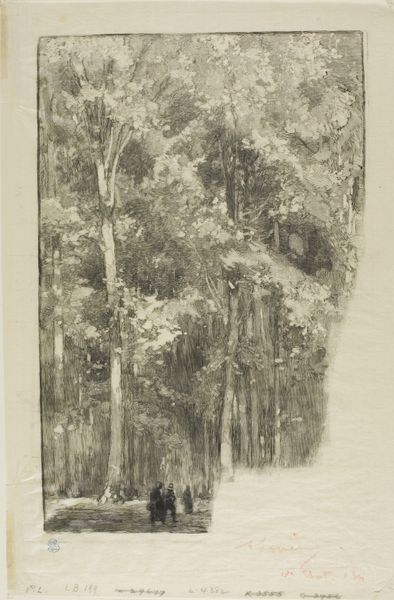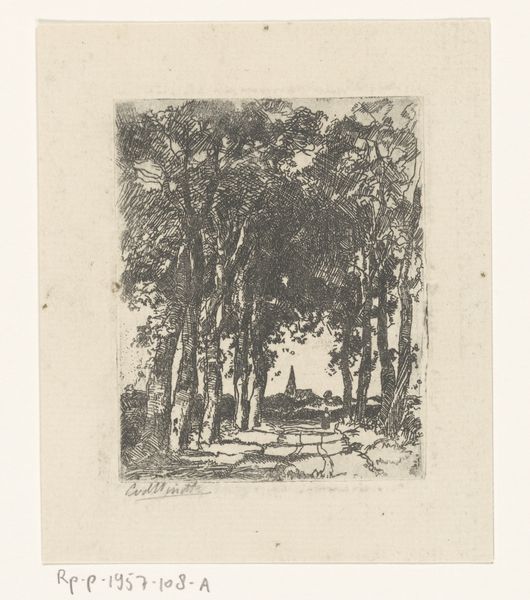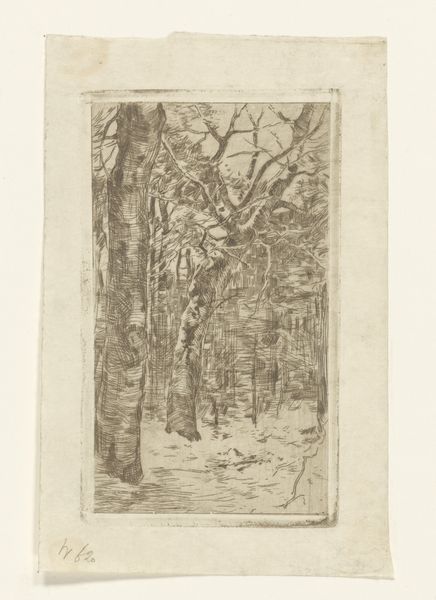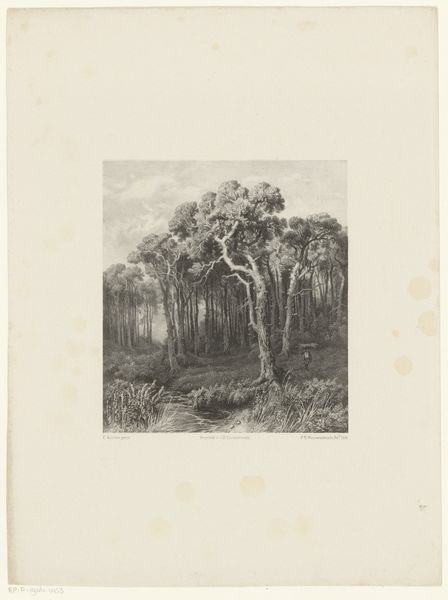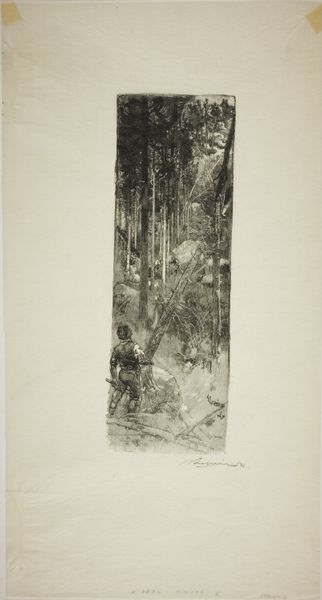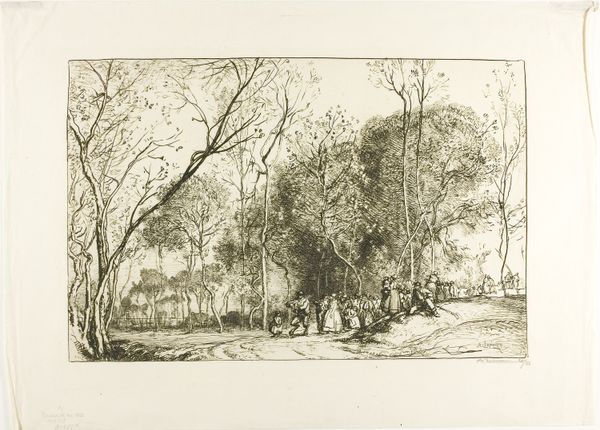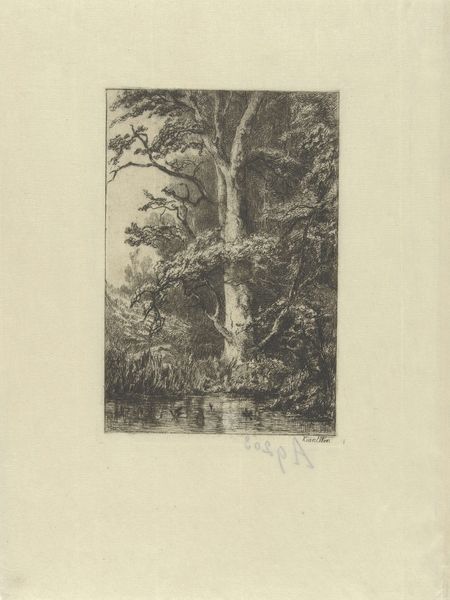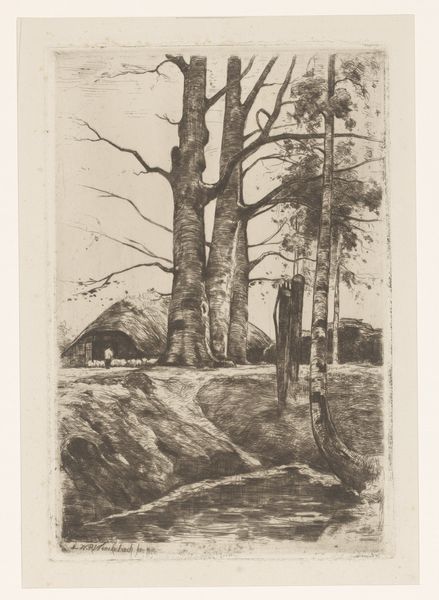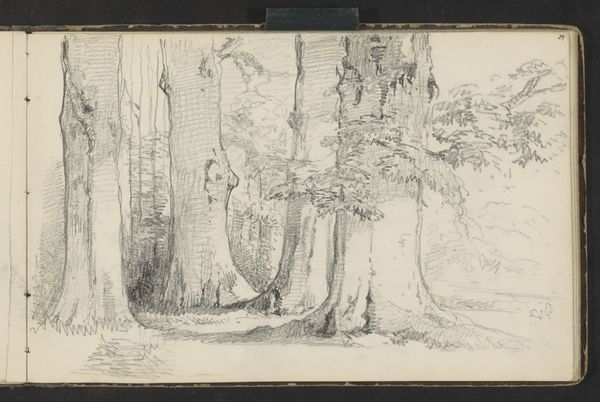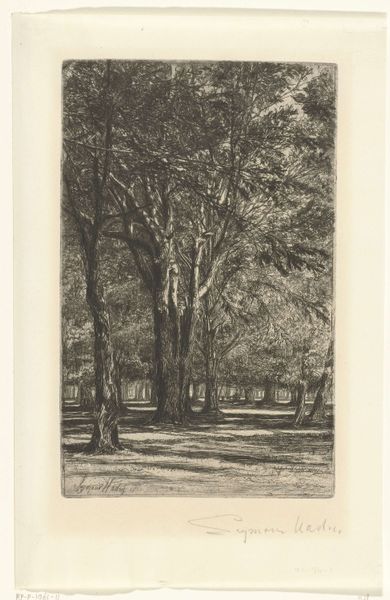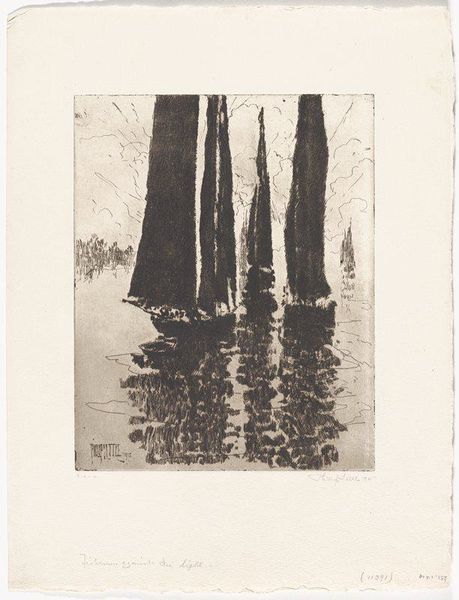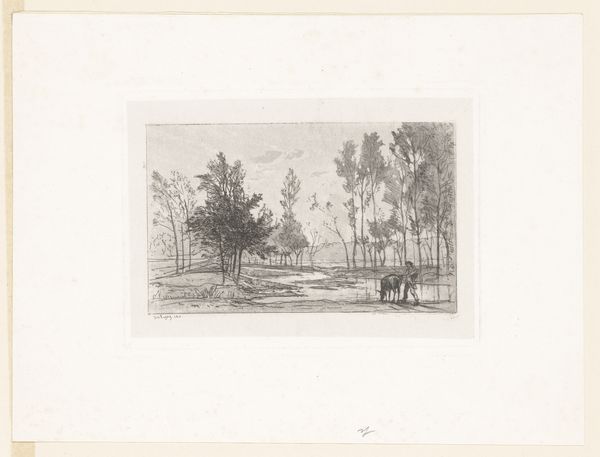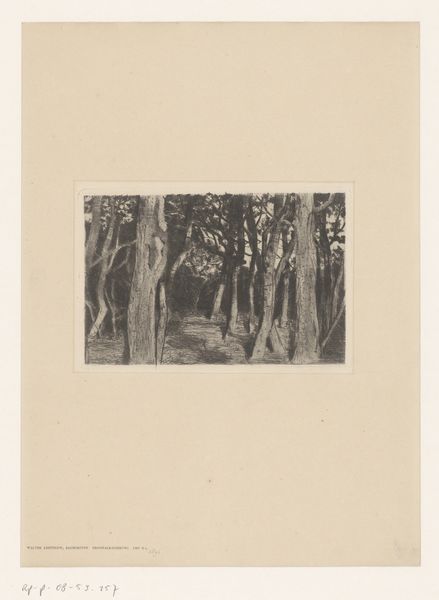
Morning, Crossroads of the Forts de Marlotte Possibly 1889 - 1908
0:00
0:00
Dimensions: 235 × 153 mm (image); 307 × 232 mm (sheet)
Copyright: Public Domain
Editor: Here we have Auguste-Louis Lepère's "Morning, Crossroads of the Forts de Marlotte," likely created between 1889 and 1908 using charcoal and engraving. The first thing that strikes me is how the figures seem almost consumed by the grandeur of the forest. What do you see in this piece? Curator: I see a visual commentary on the rapidly changing social landscape of late 19th-century France. The burgeoning industrialization threatened traditional ways of life and pushed people into urban centers, which is so at odds with this image of nature. Lepère, through the figures' diminishment in relation to the overwhelming forest, seems to be grappling with themes of displacement, loss of autonomy, and perhaps a romanticized longing for a simpler existence. Do you think the choice of charcoal and engraving enhances these themes? Editor: Definitely! The monochromatic palette and the graphic quality of the engraving amplify the sense of starkness, contrasting sharply with the soft, inviting impressionism that was in vogue. Curator: Precisely! Lepère isn't just depicting a landscape; he's subtly questioning the dominant narratives of progress and national identity of the time, embedding a critique of modernization within a seemingly benign natural scene. The intersection represented isn’t only a physical space but one loaded with societal crossroads. What does this make you think about in terms of contemporary anxieties about technology? Editor: That’s such a good point. It feels very relevant today. We're still grappling with technology, aren't we, and questioning what’s gained and what's lost. Curator: Absolutely, and Lepère's work reminds us that these questions aren’t new; they are embedded in our collective history. Editor: That gives me a lot to consider. Thank you! Curator: Likewise! It’s by bringing the historical context into our conversations with the artwork that helps to deepen our perspective.
Comments
No comments
Be the first to comment and join the conversation on the ultimate creative platform.
